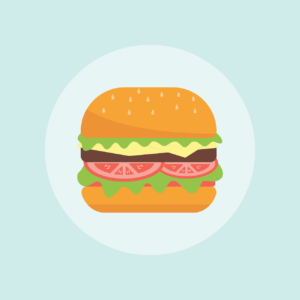
Springs sports swung into action weeks ago while summer and fall sports prepare for tryouts, sign-ups, and early practices. In Mississippi, March and April present beautiful months (when it doesn’t rain every day) where you can find a sports competition or practice of just about any sport you like. If your child plans to participate in a new season of sports or a new sport altogether, read on to learn about how a sports physical isn’t just necessary but could save their life.
What’s the difference between a sports physical and an annual wellness exam?
A sports physical focuses on the aspects of your child most likely to be affected by active play. These aspects include your child’s joints, breathing, heart rate, blood pressure, etc. Annual wellness exams cover a broader spectrum of your child’s wellbeing. This exam often includes blood and urine tests, questions about your child’s academic performance, nutrition, sleep habits and behavior.
Each type of exam focuses on a specific aspect of your child’s wellbeing and both are necessary. The Mississippi High School Athletic Association has a Mississippi Athletic Participation Form your school will hand out for your child’s provider to complete. This exam should catch major health issues that might affect your child’s participation. However, it will not catch other problems only discovered through an annual exam.
Annual exams, on the other hand, may not discuss injury prevention for your child’s sports or how to prevent dehydration or overuse. For your child’s healthiest future, ensure your child receives both exams.
Who should complete my child’s sports physical?
Many schools hold physical days on campus. However, others may drive student-athletes off campus to low or no cost physical days. During these events, physicians or nurse practitioners see hundreds of athletes. Your child will receive a quality sports physical at a low cost in a convenient way, making these events very popular. If your child is unable to participate in these events, your regular medical providers can provide the same service at a reasonable fee.
A benefit to having your child’s regular provider perform the sports physical is a continuity of care. That means one provider who knows your child’s medical history can provide care specifically for your child in a less rushed atmosphere. Continuity of care is especially important if your child has an illness that can affect their athletic performance. Some of those illnesses include asthma, allergies to stinging insects, diabetes or other illnesses.
When should my child have a sports physical?
Most schools require a physical every calendar year. As your child grows they will experience different challenges and health risks. A physical each year screens for those changes. We suggest your child complete their physical at least six weeks prior to starting a new activity. If your provider notices a problem and refers your child to a specialist you have time to see the specialist and determine treatment (if needed) before the start of tryouts, practice or games.
School physicals usually begin as students enter the seventh grade. Children participating in sports earlier than this age should also undergo a sports physical to ensure they are performing at their optimum best.
What does a sports physical involve?
During a sports physical, your provider evaluates your child’s:
- Medical history
- Family history
- Height and weight assessment
- Vision exam
- Musculoskeletal exam
- Cardiac screening (pulse rate and blood pressure)
What if they find a problem?
Most sports physicals result in an approved form after a 20-30 minute visit with your provider. If your child’s physical returns an issue, your provider will likely refer your child to a specialist. It could be something as simple as a referral to an optometrist for glasses or a recheck of blood pressure in a week or two.
Providers rarely bar children completely from playing a specific sport. The majority of issues found in a sports physical can be treated in a way that allows your child to continue participation.
What should we bring for the exam?
Be prepared to complete information on your family history of illnesses and your child’s medical history. This includes hospitalizations, injuries, and surgeries. Remember to bring a list of all your child’s regular medications. If your child wears glasses make sure they have those for the exam.
In short, if your child intends to participate in a sport this summer or fall, now’s the time to schedule a sports physical. Our providers are prepared to complete this exam for your child and to provide follow up care if needed.




 Infectious Mononucleosis (Mono) is often called the kissing disease because it’s spread by contact with viral-infected saliva. You can get it from kissing, but it’s also spread through coughing, sneezing, or the sharing of items such as drinking glasses, eating utensils, straws, toothbrushes, or lip gloss. Mono is contagious, but it’s not as contagious as other viruses such as the common cold.
Infectious Mononucleosis (Mono) is often called the kissing disease because it’s spread by contact with viral-infected saliva. You can get it from kissing, but it’s also spread through coughing, sneezing, or the sharing of items such as drinking glasses, eating utensils, straws, toothbrushes, or lip gloss. Mono is contagious, but it’s not as contagious as other viruses such as the common cold.



